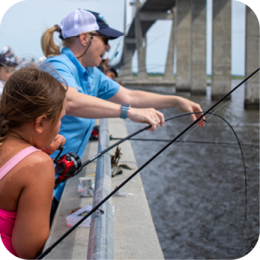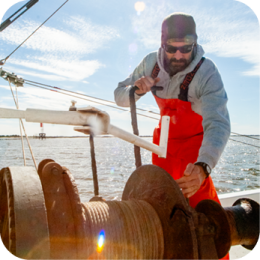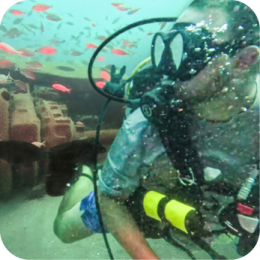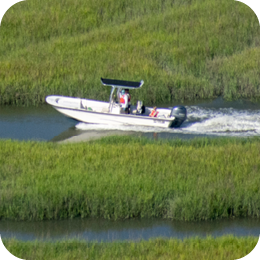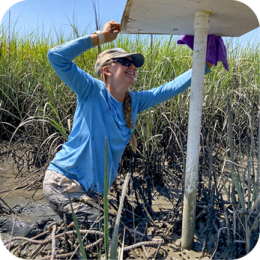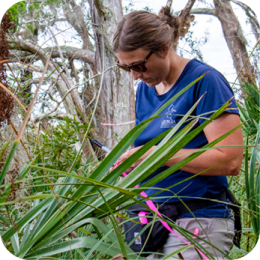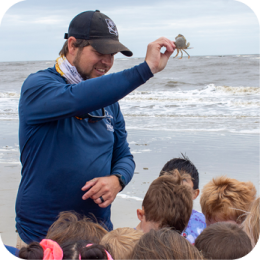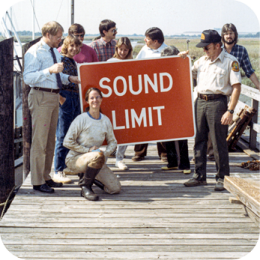This serves as notification from the Coastal Marshlands Protection Committee and the Georgia Department of Natural Resources of a request from the Glynn County Board of Commissioners for a Coastal Marshlands Protection Act (CMPA) permit under Official Code of Georgia (O.C.G.A.) 12-5-280 et seq., to dredge a tidally influenced stormwater drainage ditch on the west side of St. Simons Island and upstream of existing tide gates at the area commonly known as Gateway of St. Simons, Glynn County, Georgia. The proposed project is under 1/10 of an acre, and therefore may be considered a minor alteration of coastal marshlands under O.C.G.A. 12-5-280 et. seq.
The proposed project is located in an area commonly known as Gateway of St. Simons Island. On August 24, 2007, Glynn County Board of Commissioners was issued CMPA Permit #555 for the construction and maintenance of connector roadways to link existing roadways in two locations, the intersection of Kings Way and Sea Island Road and Sea Island Road and Demere Road. Areas were to be filled and paved to achieve a roadbed that was double-laned on the Kings Way and Sea Island Road location and single-laned at the Sea Island Road and Demere Road location. The authorized double-laned section is approximately 50 feet wide with 10 feet graded shoulders on either side, for a total width of 70 feet. The authorized single-laned section is approximately 15 feet wide with 20 feet graded should on either side, for a total width of 55 feet. Approximately 4,726 cubic yards (cy) of fill was brought in to bring the authorized areas up to the grade of the existing roadbed. The Sea Island-Demere Road roadway connector contains approximately 1,846 cy of fill. The Kings Way-Sea Island Road connector contains approximately 2,880 cy of fill. Both connector road beds were graded with 4:1 slopes. The Sea Island-Demere Road roadway impacted approximately 7,840 square feet (0.18 acres) of coastal marshlands. The Kings Way-Sea Island Road roadway impacted 10,455 square feet (0.24 acres) of coastal marshlands. The combined roadway areas impacted approximately 18,295 square feet (0.42 acres) of coastal marshlands.
Currently, the existing drainage ditch runs north to south on the west side of Sea Island Road. There are two (2) 36” reinforced concrete pipes (RCP) located under Sea Island Road that connect into the ditch on the upstream or north side of Demere Road. The ditch runs under Demere Road via two (2) 36” RCP and continues south under the ramp leading to the Torras Causeway from Sea Island Road to Demere Road via a 48” box culvert with a tidal control structure on the south or downstream side of the culvert. In addition, there is a 24” RCP located under the ramp leading to the Torras Causeway connecting the marsh area on the south side of the ramp to the area bounded by the ramp, Sea Island Road and Demere Road. The applicant contends the only tidal connection to the drainage area north of the ramp leading to the Torras Causeway is via the 24” RCP described above.
The applicant proposes to dredge tidally influenced areas of the existing drainage system north of the ramp leading to the Torras Causeway in order to address sediment accumulation. The applicant contends that by conducting the proposed dredging activities, the system will be returned to its original design and purpose.
As proposed, the marshlands component consists of consist of four (4) locations. At each location, the applicant proposes to remove vegetation and remove sediment. Project Area 1 is the portion of the ditch that is immediately south or downstream of the (2) 36” RCP pipes located under Demere Road. Project Area 2 is located north of Demere Road. Project Area 3 is northwest of Sea Island Road. Project Area 4 is northeast of Sea Island Road. All dredge material will be removed from site and transported to the Blythe Island Regional Park where it will be dewatered by overland flow. The applicant is proposing future maintenance of the ditch that would include removing sediment deposits down to the -1.23ft. elevation, mobilizing in the upland area to maintain the site, and periodic inspections to ensure proper drainage flow.
At Project Area 1, the applicant is proposing to remove approximately 5,964 sq.ft. of marsh vegetation and dredge approximately 187 cubic yards (cy) of sediment. The area to be dredged is approximately 21ft. x 165ft. (3,465 sq.ft.). The marshland component of this area will total 871 square yards (sq.yd.) and will result in 0.0781 acres of permanent impacts.
At Project Area 2, approximately, 400 sq.ft. of marsh vegetation will be removed from this area, and approximately 38 cy of sediment will be removed. The marshland component of this area will total 44 sq.yd. and will result in 0.0091 acres of permanent impacts.
At Project Area 3, approximately 60 sq.ft. of marsh vegetation and approximately 5 cy of sediment will be removed. The marshland component of this area will total 7 sq.yd. and will result in 0.0013 acres of permanent impacts.
At Project Area 4, approximately 60 sq.ft. of marsh vegetation and approximately 5 cy of sediment will be removed. The marshland component of this area will total 7 sq.yd. and will result in 0.0013 acres of permanent impacts.
As proposed, the project will permanently impact approximately 3,912 sq.ft. (0.0898 acres) of coastal marshlands.
The upland component of the project consists of a staging area for equipment and debris, and the removal of vegetation. The upland component totals approximately 1,793 sq.yd. Any vegetation within the project areas will be removed as needed. The total amount of vegetation that may be removed within the upland component totals 9,544 sq.ft.
It is the responsibility of the applicant to demonstrate that the project is not contrary to the public interest and that no feasible alternative sites exist. Impacts to coastal marshlands must be minimal in size. In passing upon the application for permit, the Coastal Marshlands Protection Committee shall consider the public interest: (1) Whether or not unreasonably harmful obstruction to or alteration of the natural flow of navigational water within the affected area will arise as a result of the proposal; (2) Whether or not unreasonably harmful or increased erosion, shoaling of channels, or stagnant areas of water will be created; and (3) Whether or not the granting of a permit and the completion of the applicants proposal will unreasonably interfere with the conservation of fish, shrimp, oysters, crabs, clams, or other marine life, wildlife, or other resources, including but not limited to water and oxygen supply.
Please provide this office with substantive, site-specific comments as to why the proposed work should or should not proceed. Comments and questions concerning this proposed project should be submitted in writing and be submitted by the close of business on August 17, 2018 to Jordan Dodson, Department of Natural Resources, One Conservation Way, Brunswick, Georgia 31520.
Click here for Project Application
